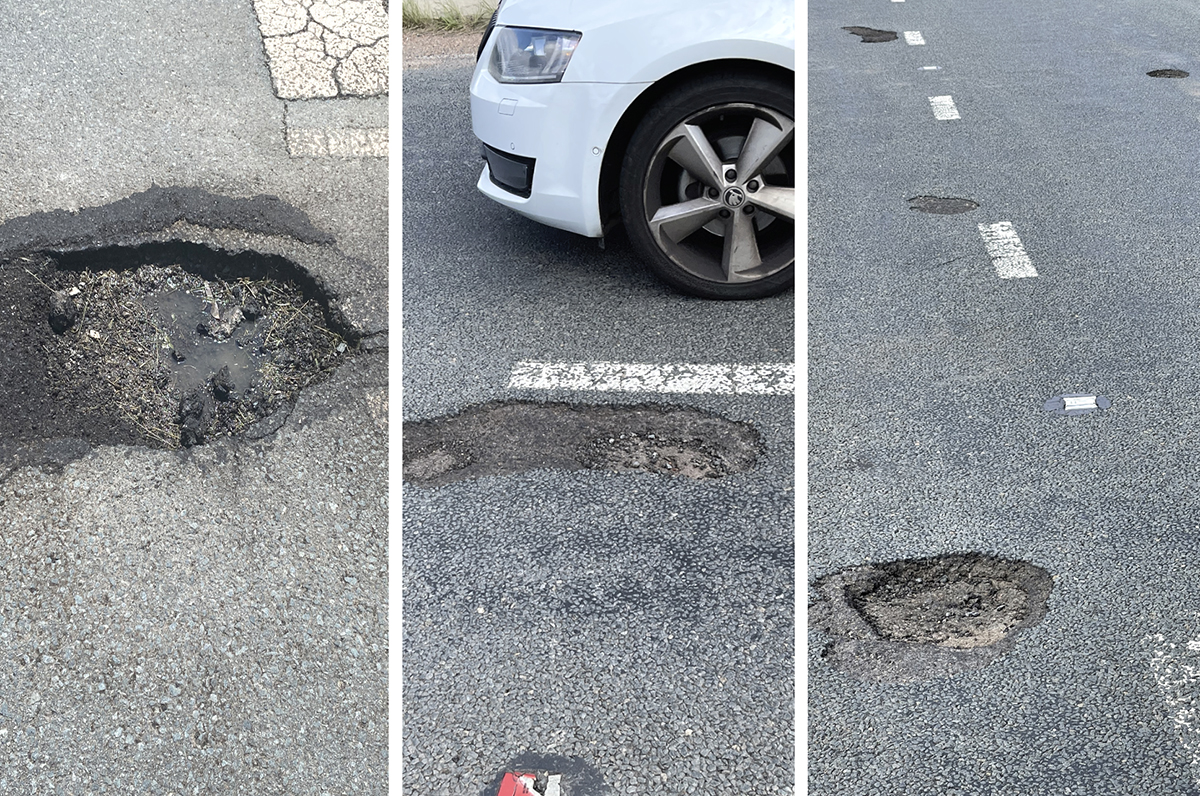
“Whimsy” columnist CLIVE WILLIAMS reckons there are three topics dear to the hearts of Canberra’s letter writers: potholes, long grass and Barr’s tram. As a public service, he thought he’d look into potholes, not literally, but in a research sense.

WHY do we call them potholes? One explanation is that in medieval times, potters would dig into the deep ruts in unpaved roads to reach the clay deposits underneath.
They used the clay to make clay pots; hence holes in the road became known as “potholes”.
Potholes in paved roads occur when water gets into the underlying structure of the road. Traffic passing over the affected area fatigues the destabilised asphalt surface and continual traffic action removes both the asphalt and underlying structure to create a hole in the road. Heavy rain, freezing and thawing also have destructive effects.
Five factors that make roads susceptible to potholing are: insufficient pavement thickness for heavy vehicles; poor quality initial construction; inadequate drainage; failures at road joints or inserts, and; defects and cracks left untreated.
La Niña’s heavy and persistent rainfall has been particularly destructive. About 8000 potholes have been repaired in Canberra in the past year; a normal year would see around 3000 repaired.
Depressions and “crocodile cracking” of the asphalt are signs of a weakened substructure. An early response to road cracking prevents further water penetration into the pavement substructure. According to the US Federal Highway Administration, 70 per cent of untreated cracks become potholes within three years.
If Canberra potholes become large enough to cause damage to tyres, wheels, and vehicle suspensions, the ACT government may be liable to pay for the damage. (It has reportedly paid out at least $43,000 this year to settle more than 50 pothole damage claims.)
Serious road accidents can be a consequence of potholes, especially on roads where vehicle speeds are higher. Bike riders and motorcyclists are most at risk.
Pothole patching may be either temporary or permanent.
Temporary patching is often done as a quick response to public demands for prominent potholes to be fixed. A quick-fix by sub-contractors usually involves cold-mix asphalt patching of the “round” pothole to temporarily restore the pavement until a more permanent repair can be undertaken.
Permanent patching requires removal of water and debris from the pothole and the use of hot-mix asphalt above new dry base materials. A best-practice repair requires a bituminous adhesive coat in the dry open cavity before bedding down the new patch material. The final step is machine-compacting the patched area. A thorough job results in a square or oblong-shaped repaired area.
Potholes have become part of popular culture.
The Beatles song “A Day in the Life” mentions potholes. John Lennon was inspired by a news brief that stated: “There are 4000 holes in the road in Blackburn, Lancashire, or one twenty-sixth of a hole per person, according to a council survey. If Blackburn is typical, there are two million holes in Britain’s roads and 300,000 in London.”
Lennon wrote:
I read the news today, oh boy
Four thousand holes in Blackburn, Lancashire
And though the holes were rather small
They had to count them all
Now they know how many holes it takes to fill the Albert Hall
In the “Seinfeld” episode “The Pothole”, George discovers he has lost his keys, including a commemorative Phil Rizzuto keychain that says “Holy Cow” when activated.
He retraces his steps and returns to a street where he had jumped over a pothole, which is now filled with asphalt. Whenever a car runs over the patch, “Holy Cow” is heard through the asphalt.
Just a brief comment on the other two banes of letter writers. Allowing grass to grow naturally to create meadowland is now considered to be environmentally desirable, so perhaps we should learn to enjoy it. As for the Woden tram, it’s difficult to come up with a reason to support it; improving the rail link to Sydney should be a much higher priority.
Clive Williams is a Canberra columnist
Who can be trusted?
In a world of spin and confusion, there’s never been a more important time to support independent journalism in Canberra.
If you trust our work online and want to enforce the power of independent voices, I invite you to make a small contribution.
Every dollar of support is invested back into our journalism to help keep citynews.com.au strong and free.
Thank you,
Ian Meikle, editor









Leave a Reply